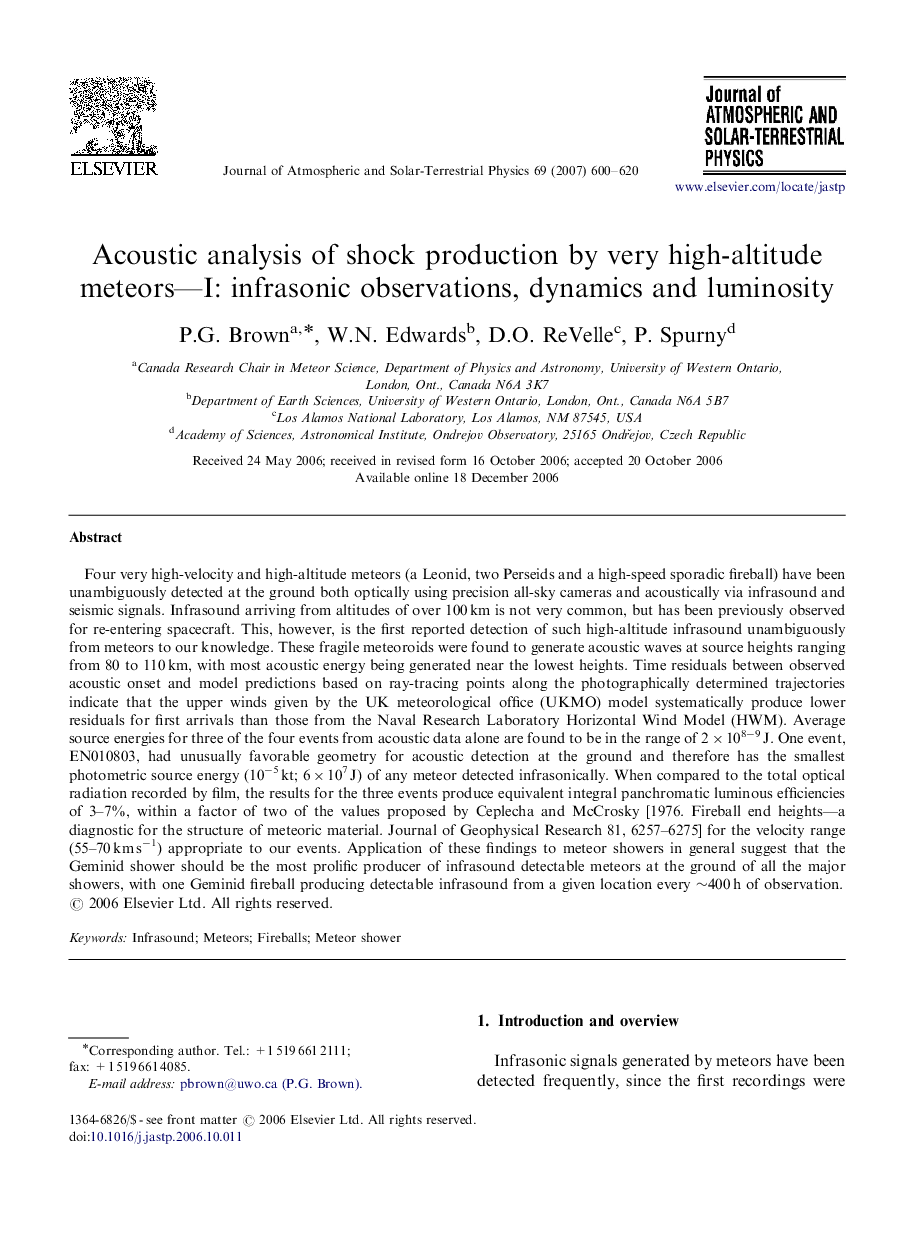| Article ID | Journal | Published Year | Pages | File Type |
|---|---|---|---|---|
| 1778044 | Journal of Atmospheric and Solar-Terrestrial Physics | 2007 | 21 Pages |
Four very high-velocity and high-altitude meteors (a Leonid, two Perseids and a high-speed sporadic fireball) have been unambiguously detected at the ground both optically using precision all-sky cameras and acoustically via infrasound and seismic signals. Infrasound arriving from altitudes of over 100 km is not very common, but has been previously observed for re-entering spacecraft. This, however, is the first reported detection of such high-altitude infrasound unambiguously from meteors to our knowledge. These fragile meteoroids were found to generate acoustic waves at source heights ranging from 80 to 110 km, with most acoustic energy being generated near the lowest heights. Time residuals between observed acoustic onset and model predictions based on ray-tracing points along the photographically determined trajectories indicate that the upper winds given by the UK meteorological office (UKMO) model systematically produce lower residuals for first arrivals than those from the Naval Research Laboratory Horizontal Wind Model (HWM). Average source energies for three of the four events from acoustic data alone are found to be in the range of 2×108−9 J. One event, EN010803, had unusually favorable geometry for acoustic detection at the ground and therefore has the smallest photometric source energy (10−5 kt; 6×107 J) of any meteor detected infrasonically. When compared to the total optical radiation recorded by film, the results for the three events produce equivalent integral panchromatic luminous efficiencies of 3–7%, within a factor of two of the values proposed by Ceplecha and McCrosky [1976. Fireball end heights—a diagnostic for the structure of meteoric material. Journal of Geophysical Research 81, 6257–6275] for the velocity range (55–70 km s−1) appropriate to our events. Application of these findings to meteor showers in general suggest that the Geminid shower should be the most prolific producer of infrasound detectable meteors at the ground of all the major showers, with one Geminid fireball producing detectable infrasound from a given location every ∼400 h of observation.
